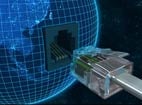I’m stilling thinking about IDC’s recent prediction that the Internet of Things could become a $7.1 trillion industry by 2020.
It’s easy to be skeptical about that number, but is that fair? What the heck does a $7 trillion industry look like, anyway?
For one thing, it looks like education, which is now a $7.1 trillion industry. Travel is another multi-trillion industry, too, according to news reports. Heck, the U.S. meeting industry alone is nearly a trillion-dollar industry. The combined total of eBay, Google, Microsoft and Apple represents $1.086 trillion dollars, according to information compiled by The Richest.
Last year, the combined oil market was valued at least at a trillion dollars, with some companies not providing data to The Economist.
Honestly, it is hard to imagine these little Internet of Things devices vying with oil, education and online technology. Then again, when you look at a list of the big companies and major markets, what stands out isn’t so much a big price tag, but near ubiquitous use, at least in first-world countries.
I pointed this out to my husband, who countered with a comment I often see online: “Yeah, but who is going to go buy a smart refrigerator just to connect to the Internet?”
This is a man who has tried nearly every Internet-connected running gadget in existence. He’s already using the Internet of Things, while mocking its existence. I nicely pointed out that runners like him are already embracing the Internet of Things.
Then I saw this Forbes article, “How London Is Quietly Becoming a City of Sensors.” This may be the best answer I’ve ever seen to those who think the Internet of Things is just a fad.
It seems London is teeming with sensors: sensors for monitoring air quality, sensors for monitoring parking spaces, sensors that help regulate traffic, even sensors for garbage collection. Got rats? London has sensors for that, too.
There are even sensors in the London Underground, thanks to Microsoft, Telent, CGI and other partners, that monitor and manage the escalators, lifts, video-feeds, communication systems and the HVAC.
All of these sensors send a steady stream of data about temperature, vibration, humidity, failures and alerts back to a central system, which can be accessed via the Internet.
After reading the article, I started to wonder if it’s even possible to have sensor-free areas. Certainly, there are already use cases literally from the underground and up.
Now the city is expanding its program to invite businesses and academics to try the system.
London will be a great test case for the rest of the world, but I think it’s already clear just how ubiquitous sensors can be. Technology-wise, they’re not complicated; it’s just Wi-Fi-enabled sensors. If other industries are any indicator, that’s exactly what makes the Internet of Things an excellent candidate for becoming a $7 trillion industry.



